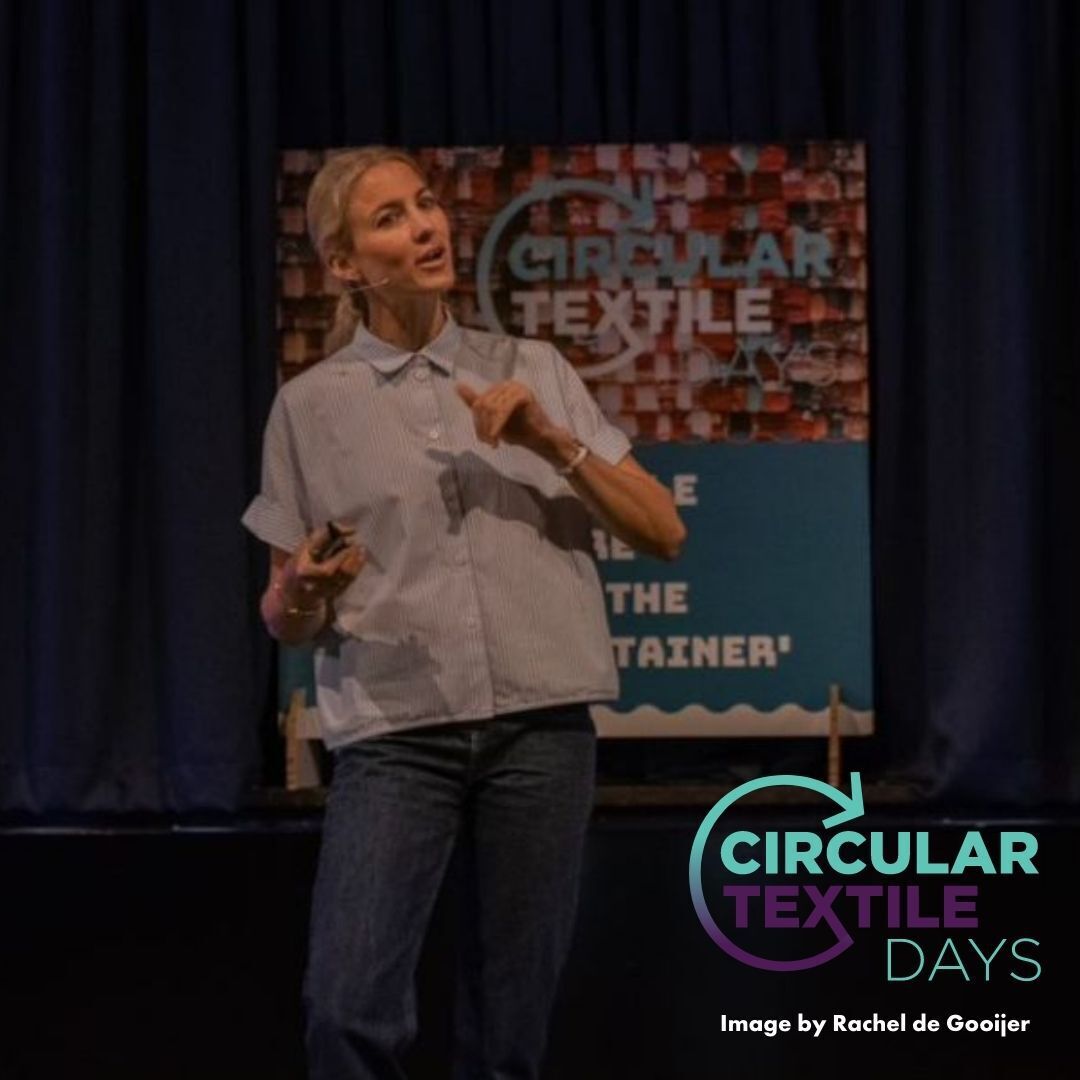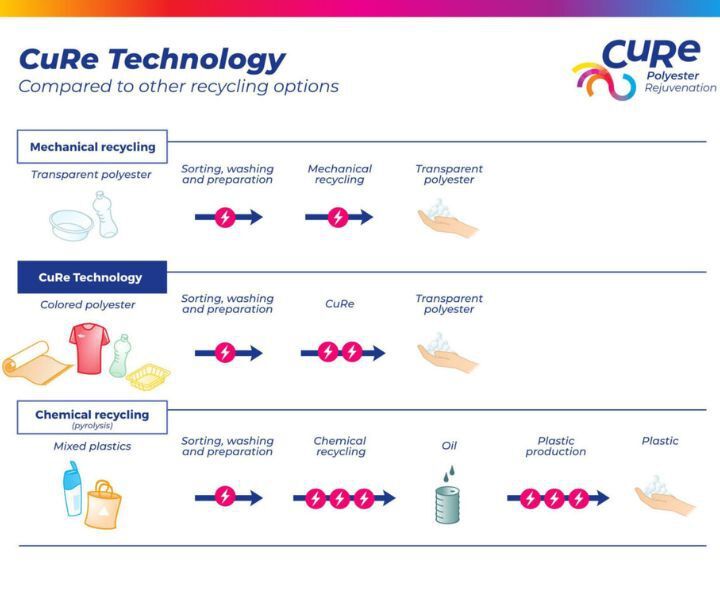
6 November 2025
Sunlight and colour: the hidden drivers of microfiber pollution in the ocean
- Plastics
According to the EU, less than 1% of clothing worldwide is recycled to make clothes again, partly due to inadequate technology.
Several organisations and companies are working to change this. On 13 and 14 September, the Circular Textile Days took place in the Netherlands, where innovations aiming to make the textile and fashion sector more circular were presented. COSH! was also in attendance to contribute to a more circular future.

The most commonly used synthetic material in the textile sector is polyester. According to Josse Kunst (CuRe, Kiduara), polyester is as circular as glass and metal. By using certain recycling processes, the material can be reshaped countless times into new products. This sounds very positive so why doesn’t it happen in practice? Less than 1% of all polyester clothing is recycled into new clothing…
If only so little polyester clothing is recycled, how come we still so many clothes made from recycled polyester in shops? That is because most recycled polyester for clothing comes from PET bottles. According to an estimate by Textile Exchange, 99% of recycled polyester in clothing comes from PET bottles.
Unfortunately, this is not as good as it sounds. In an ideal, circular world, PET bottles would be recycled into new PET bottles, not clothes. It’s good news therefore that companies such as CuRe are developing new technologies to recycle polyester from clothes. Recycling textiles into new textiles is called fibre-to-fibre recycling.
The clothing recycling process consists of many steps. Read more about how it works here. Synthetic materials can be recycled in two ways: mechanically or chemically. In mechanical recycling, the material is cut into small pieces of plastic. These pieces are then melted down to spin new yarn. This is how PET bottles are recycled, for example. This process is only possible with pure materials to which no dyes or other chemicals have been added.
The chemical recycling of polyester is less common because it is an expensive process. In this process, the raw materials are broken down, purified and converted into new particles. By removing all contamination and dyes, these materials can then be recycled with their original quality in a loop.

CuRe developed a new process to make the chemical recycling of polyester cheaper. The technology uses less energy than conventional chemical recycling processes. It can also recycle more complex material blends. Step by step, CuRe is developing more purification technologies to be able to process more complex raw materials and material blends in the future.
One of the biggest challenges for clothing recycling is the use of elastane in textiles. A polyester-elastane blend is often used, for example in sportswear. More and more clothes contain elastane to improve their comfort.
The presence of elastane in textiles, however, cannot yet be detected in the filtering process. Due to the chemical structures of polyester and elastane being very similar, it is difficult to separate the materials. As a result, it is not possible to recycle each of these materials separately and give them new lives.
Another problem in textile recycling is coatings. Many products are given protective layers, or coatings. Think, for example, of your waterproof raincoat or backpack! These coatings are made from polyurethane. As the textile and the coating cannot be separated, these materials cannot be easily recycled. The only way to reuse these materials is through mechanical recycling but this really diminishes their quality.
Innovative technologies, like CuRe’s, are essential to building a circular future. There are also other companies and organisations working on this. For example, in Waregem, Belgium, there is the company Concordia which developed Purfi, a recycling process for polyester-cotton blends. Through a reverse spinning process, Purfi can recycle the fibres without losing quality. The cotton fibres are processed into cotton viscose and the polyester retains all its original properties.
Synthetic clothing will, nevertheless, never become the most sustainable alternative. Even if the materials can be fully recycled afterwards, other risks remain. Washing synthetic clothes can lead to the release of microplastics. These are then carried by the brown water into our rivers and oceans. In addition, synthetic materials will never be biodegradable in nature.
Therefore, COSH! recommends washing your synthetic clothes as little as possible, and to always use a GuppyFriend. This is a laundry bag that catches microplastics.
Thanks to innovations like Purfi and CuRe, the future of circular fashion looks bright. At COSH! we applaud this! Nevertheless, we also recommend not to count on them just yet. These technologies are still in development and thus not yet available on a large scale. It is therefore better to prefer materials that are already recyclable. Avoid material blends so that your clothes will be easier to recycle afterwards.

6 November 2025

29 October 2025

20 October 2025